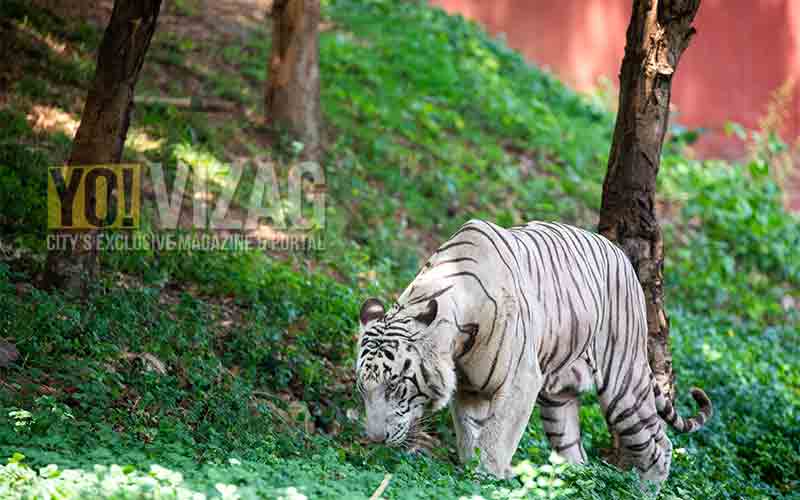As part of the All India Tiger Estimation exercise taken up across India, an animal census exercise will be conducted in the Visakhapatnam forests. This exercise, which will commence on 8 October, 2021, will help assess the quality of the habitat and estimate the population of a species or an animal.
The All India Tiger Estimation exercise is a national goal to have a credible and scientific national monitoring protocol to provide concrete information regarding the spatial extent and population size of the tigers. India has conducted four such cycles of tiger status assessment (2006, 2010, 2014, 2018) and this exercise will be part of the fifth cycle. Unique to the process, this time, the monitoring – census exercise will not only be conducted manually but will involve hi-tech camera trapping to aid the exercise.
Speaking to Yo! Vizag, Visakhapatnam District Forest Officer, Anant Shankar (IFS), threw more light by elucidating the entire process. He informed that the staff have been adequately trained to carry out the exercise – from collecting the data, to entering the details for further assessment. The teams will be using an application developed by the National Tiger Conservation Authority to collect the data. “Earlier it (this exercise) was restricted to only tiger reserves, but subsequently, with the increasing need for accurate data, the requirements have been mended and even in the normal forest areas it is being carried out. The manual collection of data will be done for the herbivores and the camera trapping exercise will be done for the carnivores and species distinguishable by the camera,” said Mr Shankar
Regarding the camera trapping exercise, the District Forest Officer informed that the camera trapping exercise at the Kambalkonda eco-park will be held as per the National Tiger Conservation Authority (NTCA) guidelines. This will be the first time a camera trapping exercise is happening at the wildlife sanctuary here at Kambalakonda. The camera trapping exercise will provide information about the presence of different wild animals, and carnivores, in the Visakhapatnam forests.
Camera trapping is a method that provides data on species locations, population sizes and how these respective species are interacting. The cameras used for this exercise are digital cameras connected to an infrared sensor that can “detect” objects that are moving. When an animal moves past the sensor, it detects and records an image or video to the memory card for later retrieval.
Elucidating on the camera trapping exercise, Mr Shankar said that firstly, the GIS (Geographic Information System) maps of the entire forest areas would be generated. With the help of the maps generated, the entire area would be divided into grids (4 sq. km grids each). At the centre of each grid, two cameras would be placed wherever these animals generally move. This exercise would be conducted for 45 days. After completion of the exercise, the collected data would be passed through a software, which will help obtain the required data.
The animal census exercise that will start on 8 October, 2021 will take approximately four months to complete and will end in January, 2022. This hi-tech resource and labour intensive exercise will exclusively be carried out at the Kambalkonda eco-park and will involve around 500 persons in the entire process.










Discussion about this post